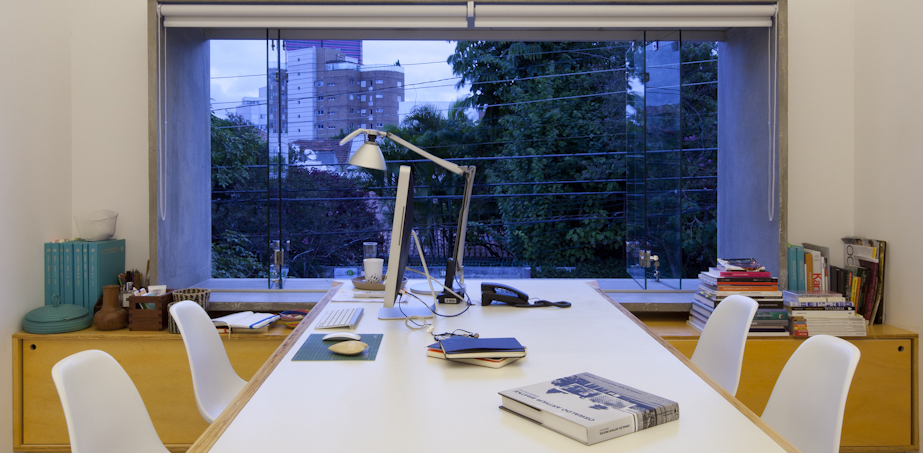The judging process for Architizer's 12th Annual A+Awards is now away. Subscribe to our Awards Newsletter to receive updates about Public Voting, and stay tuned for winners announcements later this spring.
Materials bring architecture to life. For global metal composite manufacturer ALPOLIC, materials create new aesthetic and functional design possibilities. With a history spanning more than 50 years, the company began in 1971 as a brand of Mitsubishi Chemical. Pilot production began in Japan, and now ALPOLIC materials are also manufactured in the United States and Germany. Today, the company has come to redefine metal composite materials across industries.
Metal composite materials (MCM) are available in a wide range of core types, thicknesses and finishes. These include solid colors to mica, metallic, prismatic, stone and timber effects, as well as decorative metals, anodized aluminum and more rare natural metals. MCM panels and façades can also be designed with printed graphics or multiple colors. The following projects bring together a range of ALPOLIC‘s material applications from around the world. Utilized across building typologies, they each showcase how the company is working with architects and designers to create innovative and durable façades.
520 West 20th
By Morris Adjmi Architects, New York, NY, United States
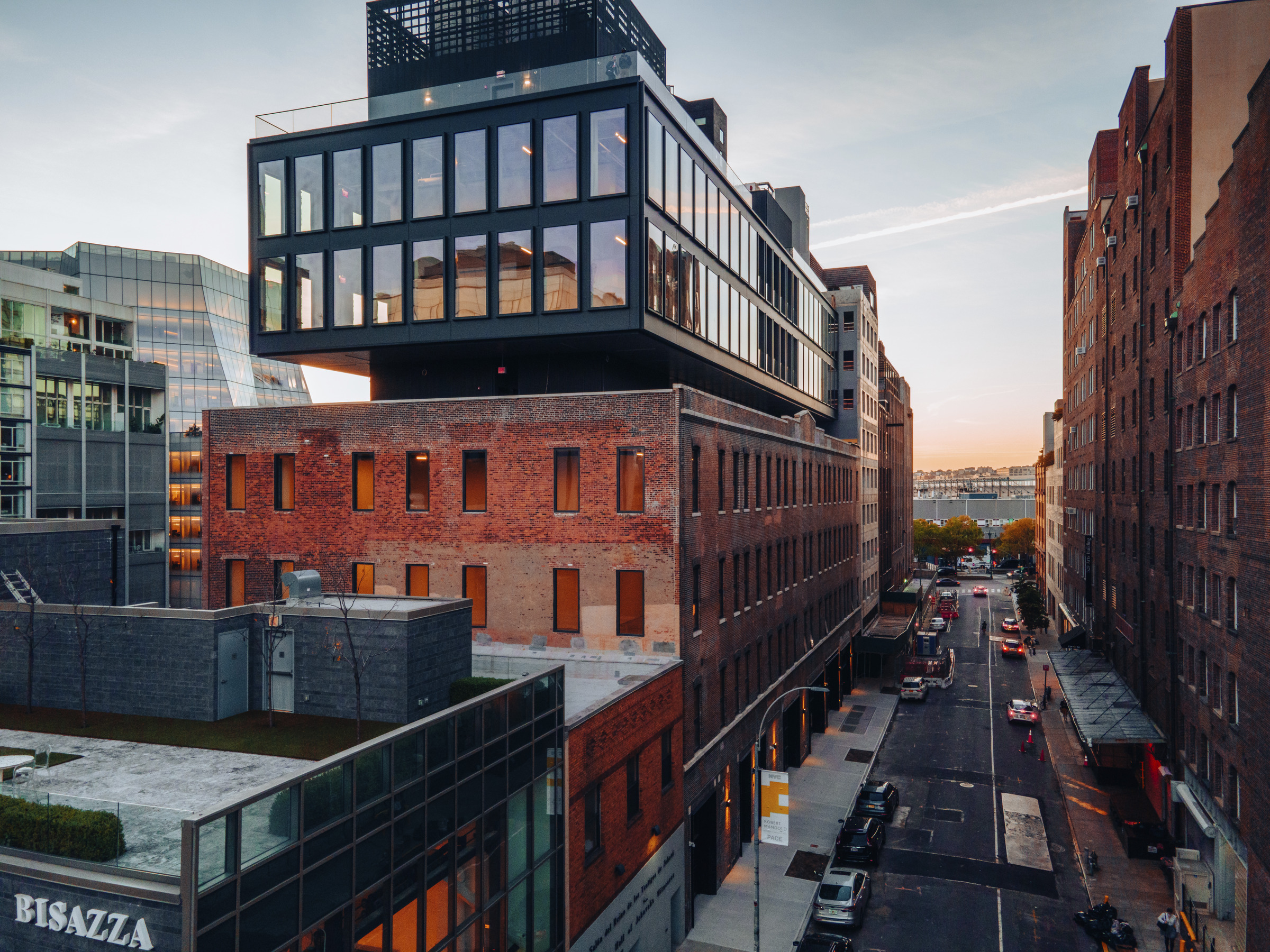
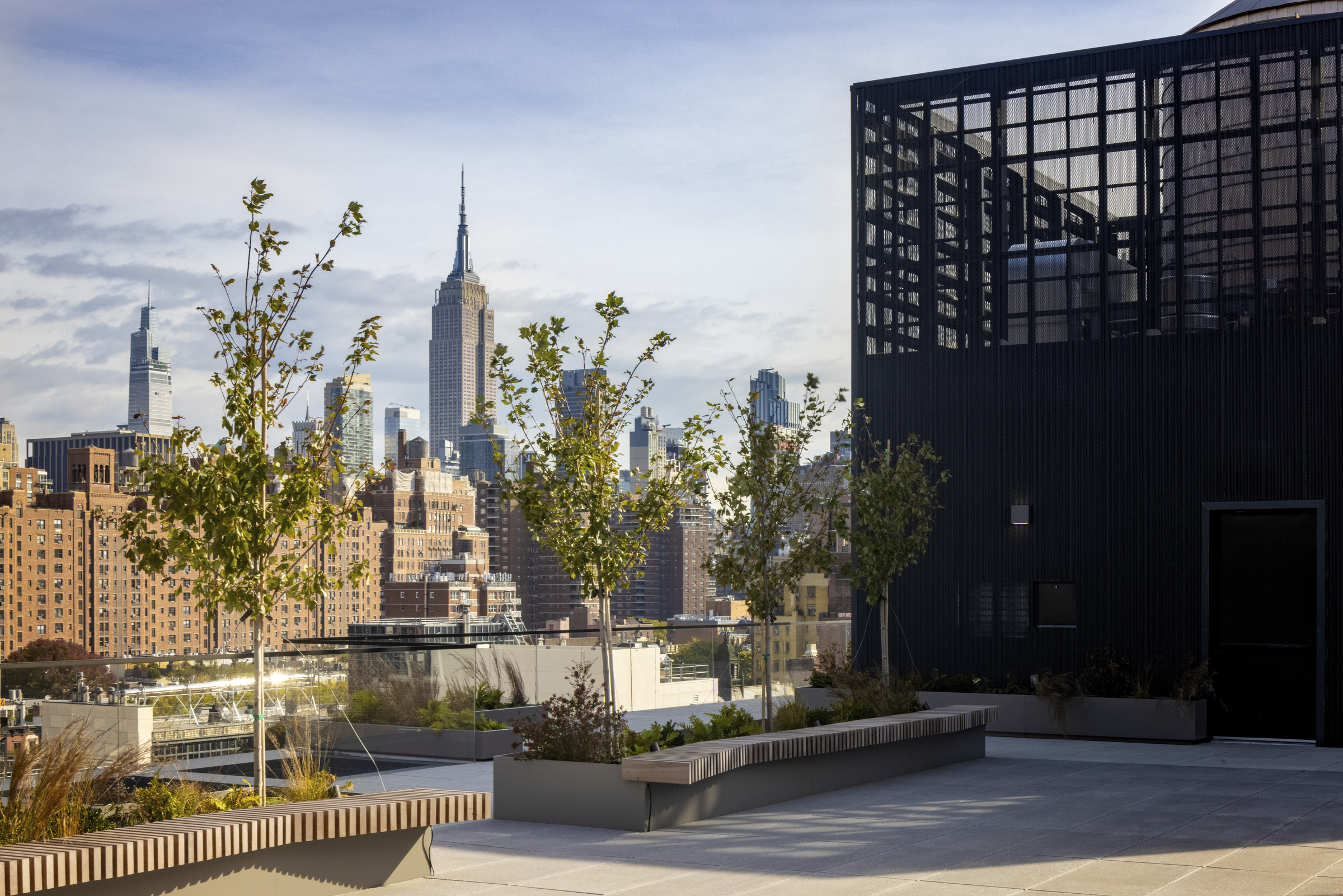 This new office building is located just off the High Line and incorporates a brick structure that recalls Chelsea’s industrial past. As the design team outlines, the original warehouse was rehabilitated as a reminder of the neighborhood’s history. Now with a new intervention hovering above it, the cantilevered addition reflects more contemporary values to bridge the past and the present.
This new office building is located just off the High Line and incorporates a brick structure that recalls Chelsea’s industrial past. As the design team outlines, the original warehouse was rehabilitated as a reminder of the neighborhood’s history. Now with a new intervention hovering above it, the cantilevered addition reflects more contemporary values to bridge the past and the present.
The original warehouse’s exterior was preserved exactly as found, with patches of discolored brick and faded advertisements left intact. Inside, the ceiling heights remain, as do the original concrete, brick and timber elements. The historic integrity of the warehouse is preserved with the help of two new vertical cores that support the glass and steel addition.
Enigma on the Park
By BDP Quadrangle, Toronto, Canada

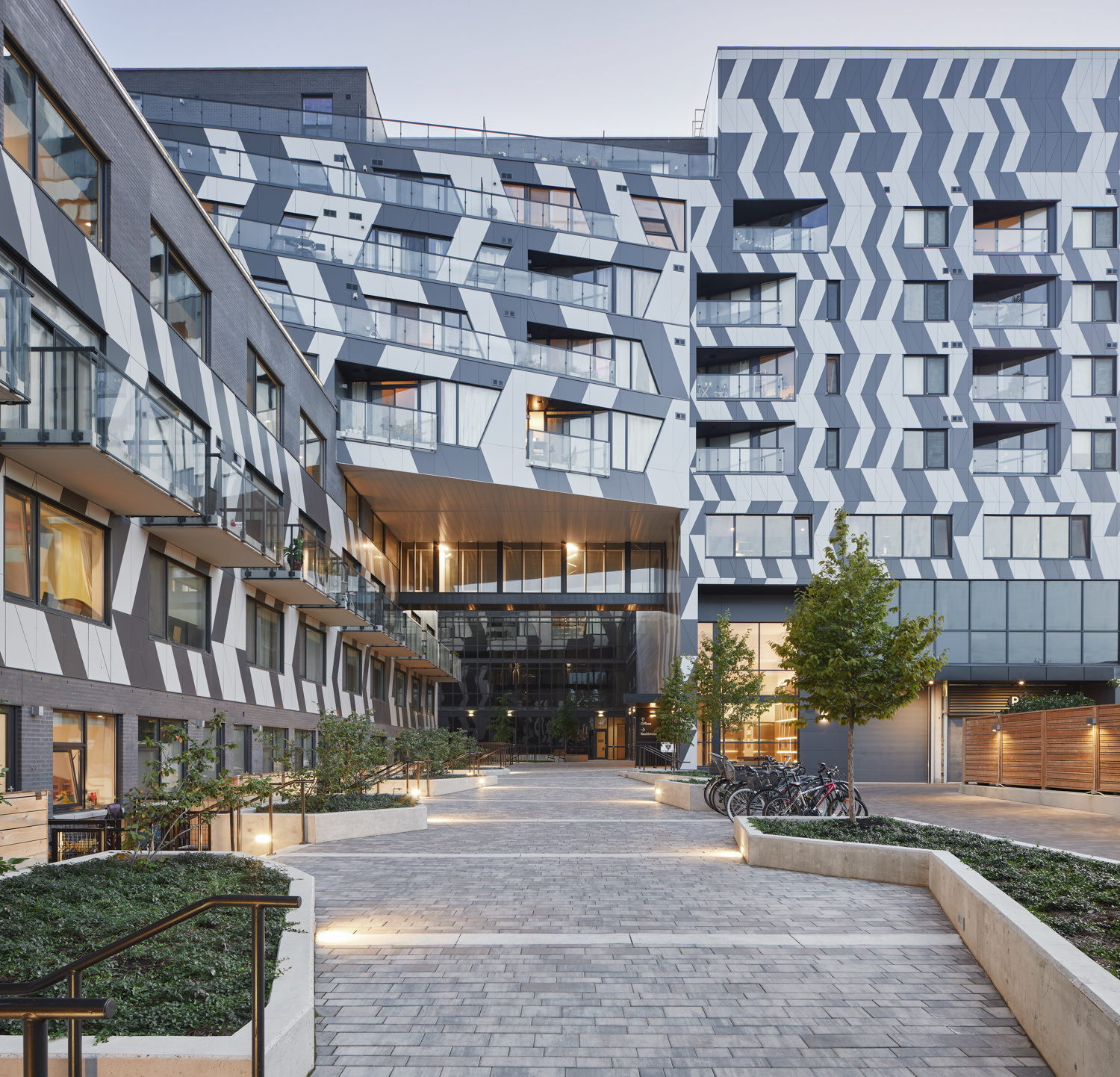 This innovative mixed-use project utilizes a contaminated site to reinvigorate a neighborhood. The residential component features 90 units, including a podium of large multi-level two and three bedroom townhouses. Four additional levels of one and two bedroom units have been added above the podium, overlooking the park below.
This innovative mixed-use project utilizes a contaminated site to reinvigorate a neighborhood. The residential component features 90 units, including a podium of large multi-level two and three bedroom townhouses. Four additional levels of one and two bedroom units have been added above the podium, overlooking the park below.
Located on the edge of a public park, the project has been strategically designed to maximize its connection to the surrounding green space, which has been extended into the building’s interior courtyard. The commercial component of the project features three levels of artist’s studios and gallery spaces. A two toned textural façade has been designed to play with the scale and proportion of the building, integrating it into the fabric of the neighborhood.
TVT Lower Campus
By LPA, Irvine, CA, United States
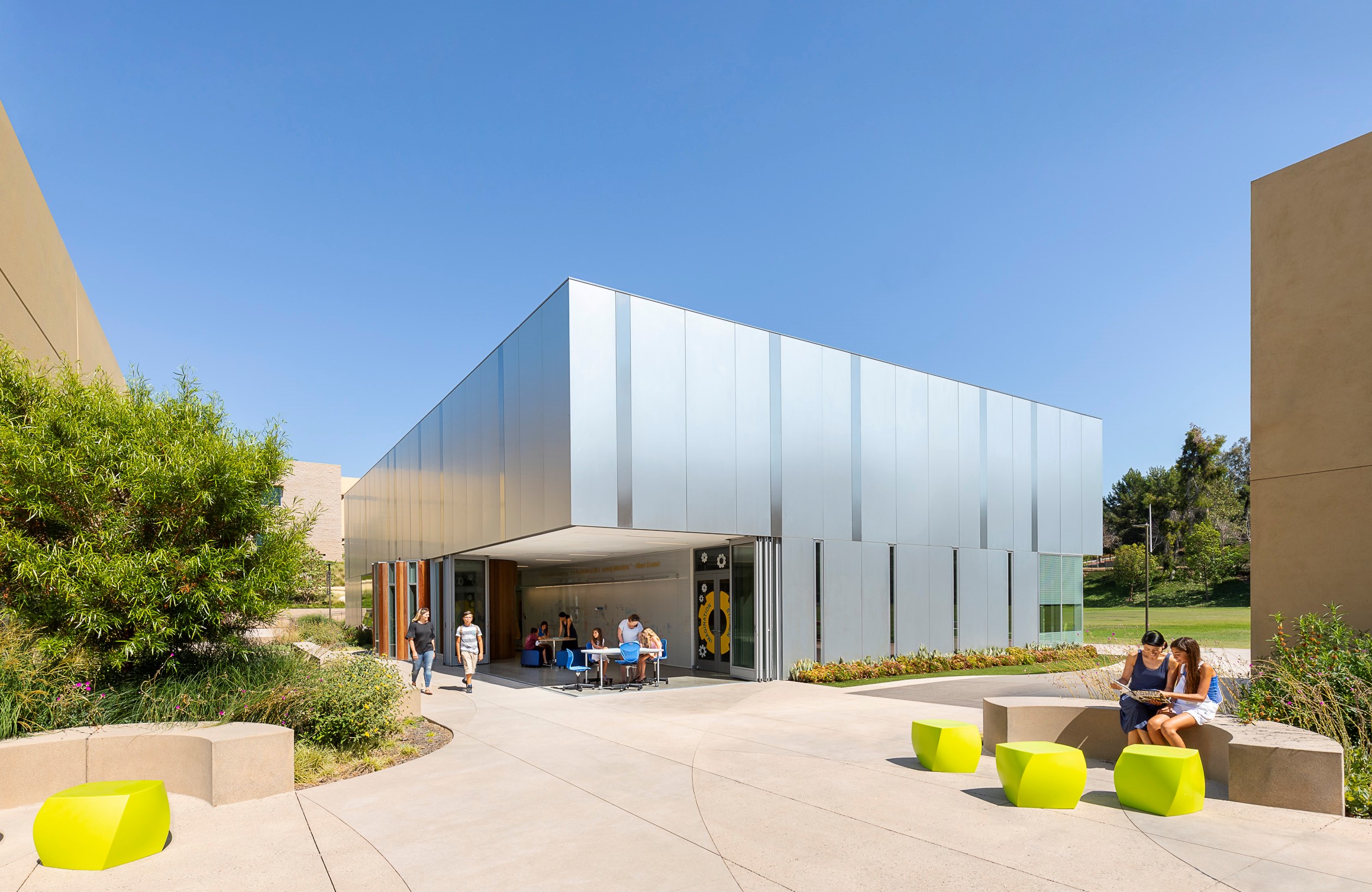
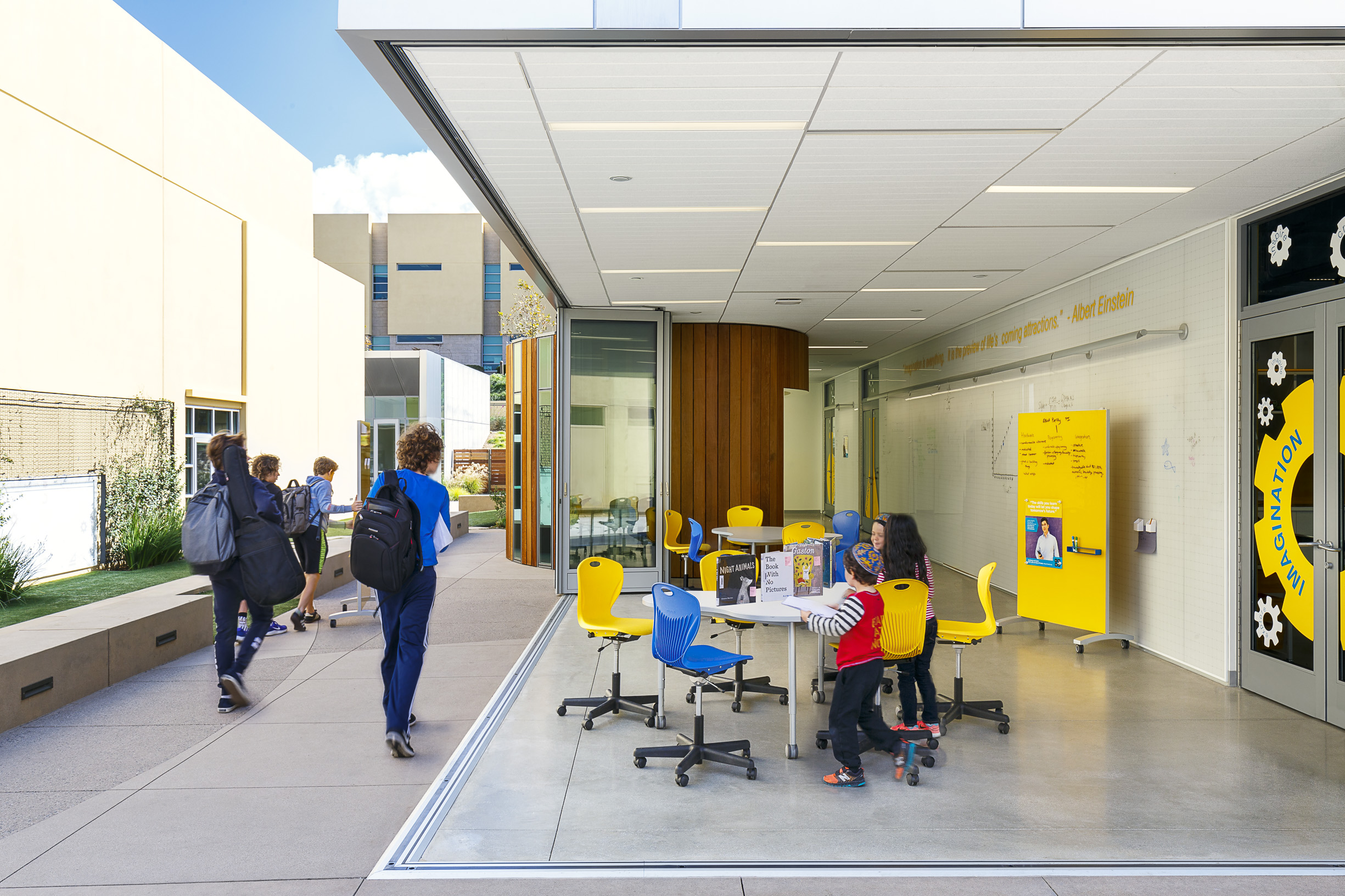 As a private K-12 school with a clear goal of developing a student-centric curriculum, Tarbut V’Torah (TVT) was made to reflect 21st century learning concepts. The maker building encourages critical thinking, creativity and interdisciplinary collaboration. In the fitness building, amenities support a balanced lifestyle. Both buildings are strategically located to complement the existing K-5 courtyard configuration.
As a private K-12 school with a clear goal of developing a student-centric curriculum, Tarbut V’Torah (TVT) was made to reflect 21st century learning concepts. The maker building encourages critical thinking, creativity and interdisciplinary collaboration. In the fitness building, amenities support a balanced lifestyle. Both buildings are strategically located to complement the existing K-5 courtyard configuration.
The school’s relative proximity to the ocean and mild climate were the foundation of the project’s design. The expansion features a range of materials, like brushed metal panels and glass. These materials were selected for their transparent and reflective qualities, allowing students to literally see themselves through the buildings or reflected on their school environment.
Breeze, Drummoyne
By Tony Owen Partners, Sydney, Australia
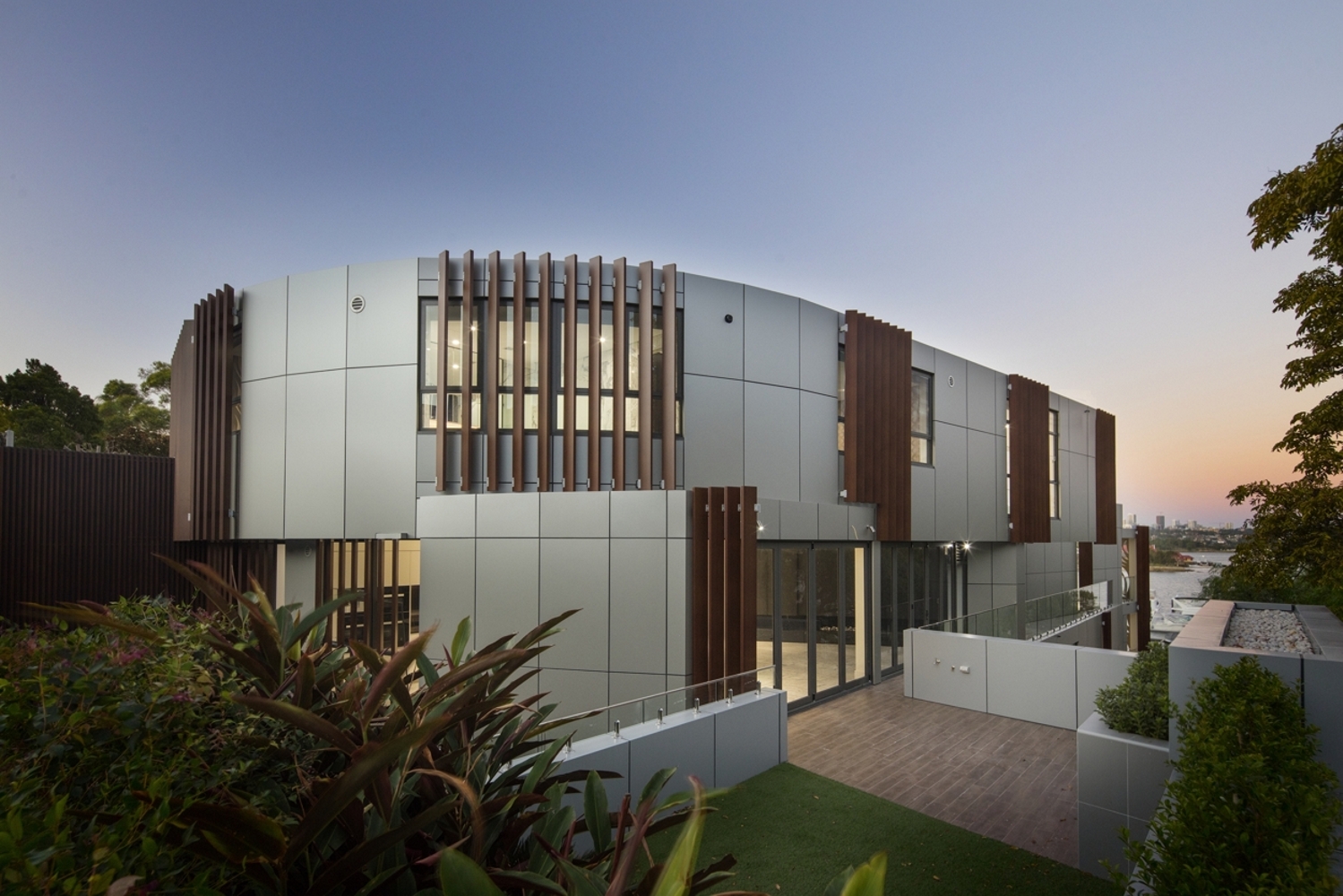
 As a boutique waterfront apartment development, Breeze is located in Drummoyne next to Peppercorn Park. It contains 11 units, a marina, pool and basement parking. The site enjoys panoramic views to the harbor and city. The guiding principle for the design came from the view corridors which fan out in differing directions.
As a boutique waterfront apartment development, Breeze is located in Drummoyne next to Peppercorn Park. It contains 11 units, a marina, pool and basement parking. The site enjoys panoramic views to the harbor and city. The guiding principle for the design came from the view corridors which fan out in differing directions.
A series of fingers spread out giving the building its unique character. Metal blade walls define these fingers. Timber louvres are located at ends of these walls to give privacy and feather the massing. Following from this, the building has a curvilinear sculptural form to the street. In turn, the massing forms two blocks with a view slot between the units.
LIT Bangkok
By Vaslab Architecture, Bangkok, Thailand
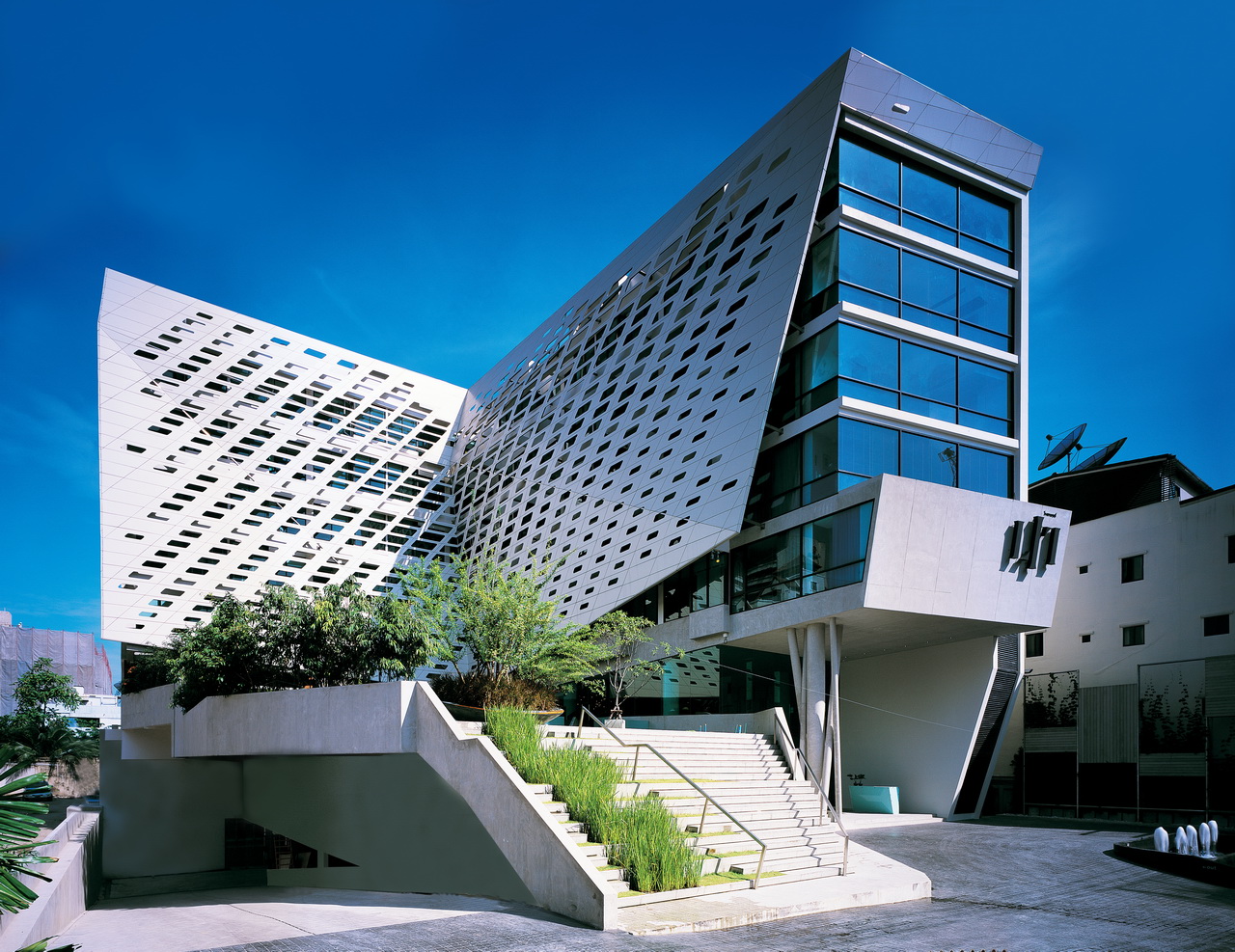
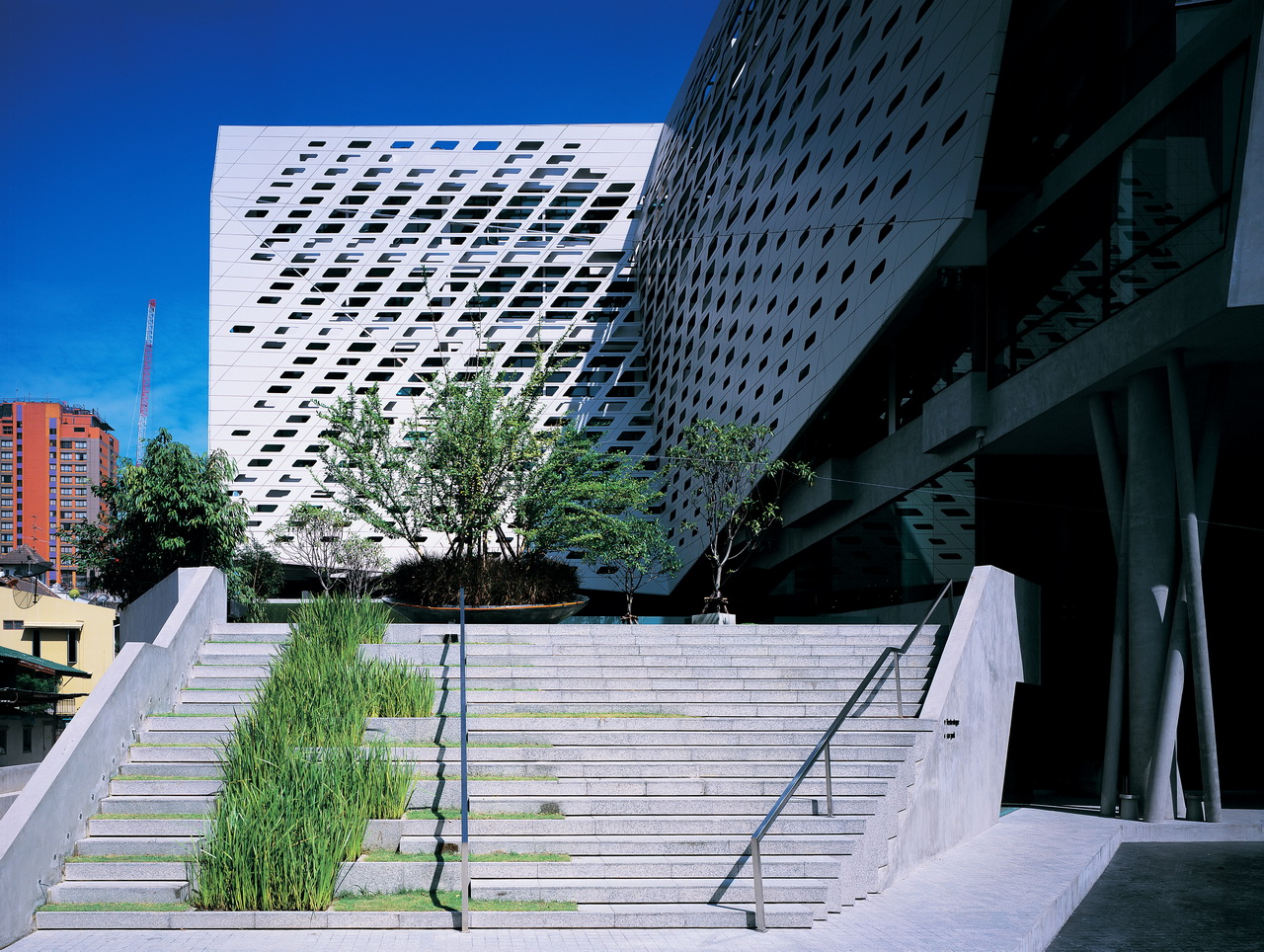 LIT Bangkok is located 650 feet (200 meters) away from sky-train, a block away from an art museum and shopping centers, and the site is surrounded by shop houses, back-packer hotels, and also street vendors. Designed by VaSLab Architecture, the project aimed to articulate architectural space with the ability to attract passersby.
LIT Bangkok is located 650 feet (200 meters) away from sky-train, a block away from an art museum and shopping centers, and the site is surrounded by shop houses, back-packer hotels, and also street vendors. Designed by VaSLab Architecture, the project aimed to articulate architectural space with the ability to attract passersby.
The L-shape of 79-room hotel consists of swimming pool, spa, fitness, steam room, restaurant & bar, and function room, altogether with green space. The façade’s pattern design is made of a series of parallelogram aluminum composite module that were laser-cut to create the variations of four different void sizes. The overall façade composition represents the dynamic folding mask with patterned punctures that gives various amount of light and different degrees of sight outside-in and inside-out.
Fleming College A Wing Revitalization
By Gow Hastings Architects, ON, Canada
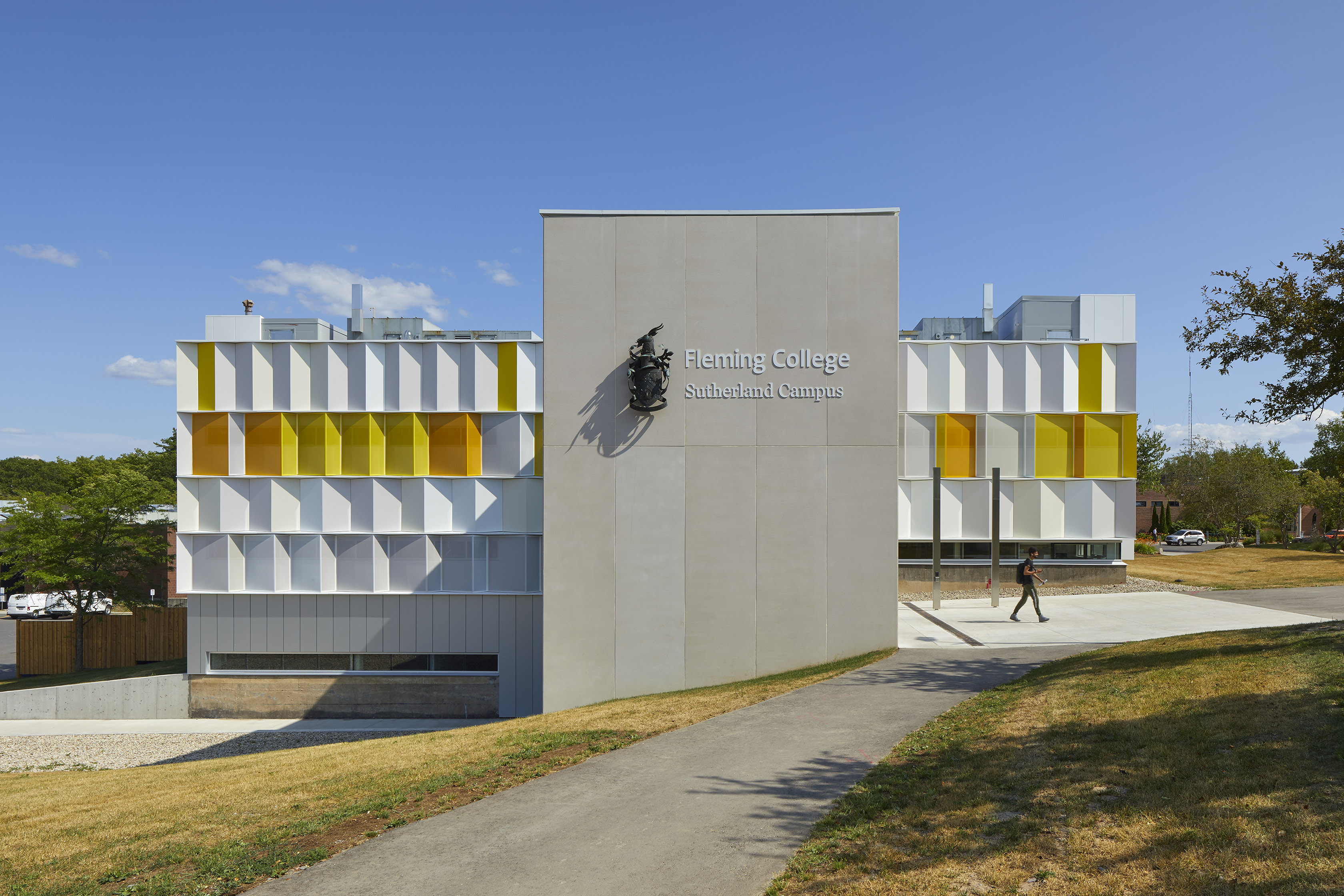
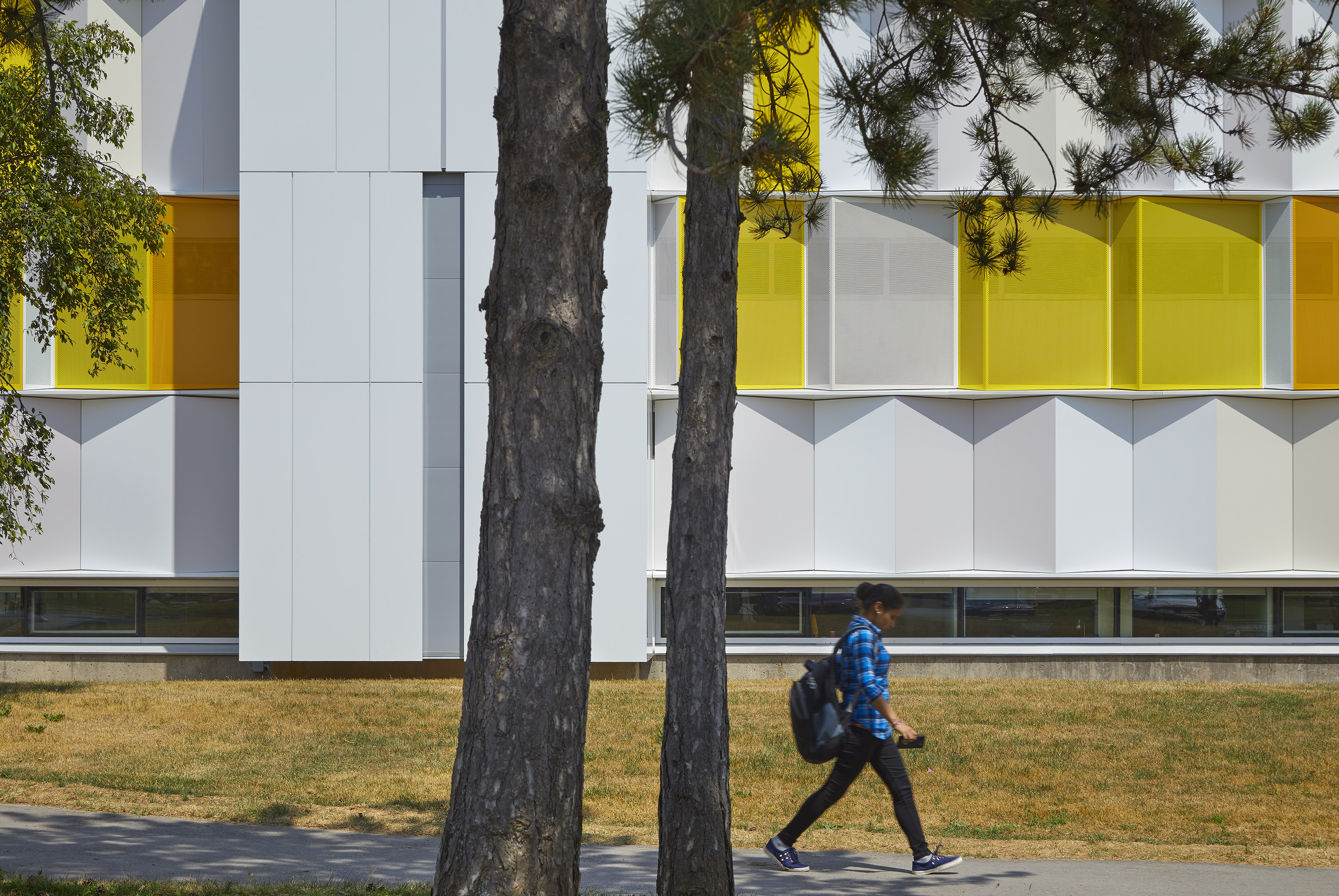 This Sutherland Campus project included revitalizing the outdated A-Wing, which serves as the campus gateway and classroom facility. The challenge was to transform the dark, heavy, and inefficient building into a contemporary one that meets the standards of 21st century learning and sustainability. Furthermore, the renovations needed to take place while the A-Wing was fully occupied.
This Sutherland Campus project included revitalizing the outdated A-Wing, which serves as the campus gateway and classroom facility. The challenge was to transform the dark, heavy, and inefficient building into a contemporary one that meets the standards of 21st century learning and sustainability. Furthermore, the renovations needed to take place while the A-Wing was fully occupied.
Gow Hastings began by shedding the building’s dark brown aluminum envelope back to its steel frame, and re-cladding it with APOLIC aluminum panels — a readily available and lightweight material that instantly gives the building a clean and luminous appearance. The college worked closely with the design team to choose the white and yellow panels that transform the façade while suitably integrating it with the original brown campus buildings.
The judging process for Architizer's 12th Annual A+Awards is now away. Subscribe to our Awards Newsletter to receive updates about Public Voting, and stay tuned for winners announcements later this spring.






 Enigma on the Park
Enigma on the Park  LIT Bangkok
LIT Bangkok  TVT Lower Campus
TVT Lower Campus 